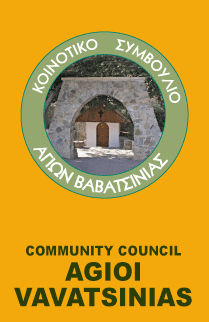TraditionalTreats
Traditional Cypriot treat are still produced in the village of Agioi Vavatsinias, such as “epsima”, “palouzes”, “soutzoukos” and “kiofterka”-as well as sweets made of fruits. The village is known for its history in wine and zivania production. Besides, this is indicated by the old boilers and the old winepress seen at the village.
“Epsima”
“Epsima” is concentrated grape juice that looks like honey. It is mostly made of black grapes. The grapes are blended and juice produced, is also known as “moustos” or “moustari”. “Moustos” is then boiled in a big pot, named “hartzi”. The foam produced by heat is removed with a big spoon. The mixture is removed from the fire and after it is cold it is reheated. White dirt is added, so as to absorb all dirt and keep “moustos” clean. This is the way in which “epsima”, a thick, black sweet and sour fluid is produced.
“Palouzes”
“Palouzes” is another traditional treat whose main ingredient is “moustos”. The initial process is the same as for “epsima”. However, flour is added in the pot. The mixture is stirred until it is coagulated. Rosewater, cinnamon and mastic are also added. “Palouzes” is ready when, according to the women of the village, “it does not stick on the plate”. It is usually served with ground almonds or walnuts.
“Soutzoukos”
“Soutzoukos” is one of the traditional treats that take a lot of time to prepare. Initially, almonds are soaked in water and then on long threads, usually a meter long, using a needle. There threads are dipped in a big pot, the “hartzi” containing “palouze”, several times. Soutzoukos is thick and this depends on how many times the thread with the nuts is dipped into the pot. It is then placed on branches so as to dry in the sun. When they are dry, then “soutzoukos” is ready. It must be noted that “soutzoukos” remains fresh for a long time.
“Kiofterka”
“Kiofterka” is a treat also made of “palouze”. It is in actual fact dried “palouze”, cut in small square pieces.
Wine
What is more, local wine is produced. Grapes used to be transferred to the wine presser after harvest. A big pot was placed under the presser and ‘moustos’ went directly into the pot that was then placed in a dry and dark place. Thisishowwinewasproduced.
Zivania
Zivania was produced either with “marc and some grape juice left at the bottom of the jar when it was transferred to another jar” or “squashed kampanarka”, namely little bunches of grapes harvested later. ‘Moustos’ used for zivania has to be fermented at least for a week; then, the producer prepares a pot, in which ‘moustos’ will be distilled and zivania will be produced.
Several sweets
Concluding, the women of the village prepare several treat made of fruits and vegetables and sugar. They mostly use walnuts, cherries, watermelons, and grapes. These treats are always kept in dry and dark place and can be kept for a long time.
Traditional Art
Silk production
The village is also famous for silk production. Initially the inhabitants formed a place suitable for breeding silkworms. To be more explicit, they placed straws and berry leaves for the silkworms to eat. At some points, the silkworms did not eat a lot and that is why the inhabitants used to say that the worms were fasting. In a short time, the silkworms would become semi-transparent and start knitting their cocoon. Then the inhabitants would take all cocoons and lay them in the sum to dry.The worms that were in the cocoon woulddie. After that, the inhabitants transferred the cocoons to the silk producer for further processing.
Source:
Ioannis Ionas,Traditional Cyprus Professions, Nicosia 2001
Nicolaou Nearchos, Cypriot Cooking, Cyprus 1992
Great Cypriot Encyclopaedia, vol.5 and vol.12
FolkloricCyprus, vol.50, 2000
|
